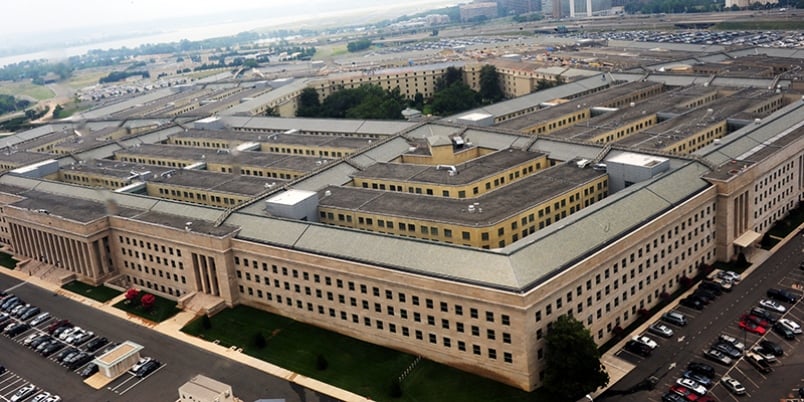
The following is the Department of Defense Board on Diversity and Inclusion Report: Recommendations to Improve Racial and Ethnic Diversity and Inclusion in the U.S. Military that was released on Dec. 18, 2020.
From the report
For more than 200 years, the U.S. military has fought to defend this nation and its interests, earning the reputation as the greatest military force in history. The U.S. military attracts highly qualified men and women who represent a wide variety of creeds, religions, races, ethnicities, sexual orientations, and other attributes that make the people of this country stronger together. Moreover, the Department of Defense (DoD) recognizes diversity and inclusion (D&I) as strategic imperatives—to ensure that the military across all grades reflects and is inclusive of the American people it has sworn to protect and defend.
Throughout its history, the U.S. military has been a leader on issues of D&I. Yet this leadership role does not make it immune to the forces of bias and prejudice that directly and indirectly affect minority Service members. As America’s most respected institution and a global leader, the U.S. military must continue to lead on D&I issues, building diverse, winning teams and creating opportunity for all.
On June 19, 2020, then–Secretary of Defense Mark T. Esper directed wide-ranging initiatives to promote morale, cohesion, and force readiness, using a three-pronged approach composed of:
- Identification of immediate actions that can be implemented to support a
more diverse and inclusive force. - Establishment of a Department of Defense Board on Diversity and
Inclusion (the “Board”) tasked with identifying additional actions related
to D&I policies and processes. - Founding of an independent federal advisory committee, the Defense
Advisory Committee on Diversity and Inclusion (DACODAI), to provide
autonomous, continuous review and assessment of the military’s actions in
this mission area.
This effort reinforces a half-century of policies, programs, and practices instituted by DoD to create an inclusive environment that harnesses each Service member’s potential. The U.S. military has traversed fundamental socio-political eras that situated DoD as a pioneering force in racial and ethnic D&I. As the largest meritocracy in the country, DoD embraces D&I for all its Service members and fosters an environment in which they can rise to positions of responsibility and leadership. While the military has been a leader in racial integration and inclusion, it nevertheless is not immune to the perils of bias and prejudice. This report recommends aggressive integration of D&I into Military Department culture to build upon decades of progress and transform DoD for today’s Service members and for generations to come.
Current State
DoD has observed modest increases in minority demographic representation in officer grades since the transition to an all-volunteer force, but persistent underrepresentation in senior officer grades continues. Congress established the Military Leadership Diversity
Commission in 2009 to study this and other matters. Since the release of the Commission’s report in 2011, DoD has restructured its D&I oversight function, developed new policies to bolster the inclusion of minority Service members, and refined metrics to better assess the
efficacy of D&I policies, programs, and practices.
Examination of recent trends in representation—including American Indian or Alaskan Native, Asian, Black/African American, Hispanic, multiracial, Native Hawaiian or other Pacific Islander, and White—shows varied levels of representation across the force. Currently, the active component enlisted population is slightly more racially and ethnically diverse than the U.S. population eligible for military service, with Blacks/African Americans and Hispanics represented at slightly higher rates. The Reserve Component shows a similar trend for Blacks/African Americans; however, Hispanics are underrepresented compared with the eligible U.S. population.
Overall, the active component officer population is less diverse than the eligible civilian population. Blacks/African Americans, Hispanics, and Asians are all underrepresented compared with the eligible population. Similar trends hold for the Reserve Component, but representation of Black/African American officers is on par with the eligible population.
Notably, the officer corps is significantly less racially and ethnically diverse than the enlisted population, for both the active and Reserve Components. Similarly, the civilian population eligible for commissioning as an officer is much less racially and ethnically diverse than the population eligible for serving as an enlisted member.
Download document here.
"board" - Google News
December 21, 2020 at 07:05AM
https://ift.tt/37CZ5iU
Final Department of Defense Board on Diversity and Inclusion Report - USNI News
"board" - Google News
https://ift.tt/2KWL1EQ
https://ift.tt/2YrjQdq
Bagikan Berita Ini














0 Response to "Final Department of Defense Board on Diversity and Inclusion Report - USNI News"
Post a Comment